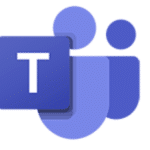MICROSOFT TEAMS PBX FEATURES
Teams Phone Systems in Australia
We won’t be beaten on price – and we deliver with fantastic service! Guaranteed!
JOIN 1000’S OF HAPPY
USERS TODAY !
BRISBANE – CANBERRA – GOLD COAST – SYDNEY – MELBOURNE
WHAT IS A MICROSOFT TEAMS PHONE SYSTEM?

The PBX (private Branch Exchange) in Microsoft’s product suite is the technology that enables call control and phone system functionalities within the Microsoft Teams ecosystem. Users can access the Teams Phone System features using either Apps on their mobile devices, clients on the laptops or PC’s or via Microsoft Teams Certified Devices.
Calls can be placed between users within your organisation internally within you business regardless of the staffs locations, meaning that there is no interaction with the outside world, and therefore no call costs. To make calls outside your business, you will need to add products such as Teams Direct Routing – which is a virtual phone line from your Teams environment to the outside world.
TEAMS PHONE SYSTEM FEATURES:
Auto Attendants
Allow you to manage incoming calls with an audio greeting that allows callers to select a destination within your business to best handle their call
Call Queues
Allows you to manage the call queues in your phone system and to set up welcome messages, on-hold music, rules for call allocations to agents or staff etc.
Music On Hold
Allows you to select your own custom music file or uses the system embedded music when a caller is placed on hold. This feature is utilise when calls are in queues.
Call answer/Initiate
This feature allows a user to answer a call with a click or touch and enables the dial-pad so that outbound numbers can be dialled from any Teams enabled device
Call forwarding & Twinning
Allows calls to be forwarded to another destination or to ring simultaneously on another device or number. Unanswered calls can be sent to co-workers or voicemail.
Group Call Pickup
Incoming calls can be routed to a group of users when the called user is busy or not available. Users within the group can then configure how they wish to be notified.
Hot & Cold Transfer
Allows the transfer of a received or made call to another user or to an external number. This can be either cold – direct transfer, or warm – consultative or transfer.
Call Park & Retrieve
Allows a call to be placed on hold (parked). Teams then generates a unique code that can be used to retrieve the call from hold via the app or Microsoft Teams supported device.
Caller ID (CLI)
Shows the number and corporate details of internal users such as photo and job title. External incoming calls will display stored information from the corporate directory.
Federated Calling
If multiple tenancies are linked, users within these tenancies can call each other like it is an internal call. This allows for secure communication and collaboration.
Presence based Routing
Inbound calls follow rules in relation to user presence, e.g. if a user has a calendar appointment – the user will be seen as “busy” and the call will be forwarded as programmed.
Integrated Dial Pad
Allows for calling utilising the embedded dial-pad in the Teams App on your mobile or desktop. You can chose to dial by number or by name if it is a stored contact.
Video Calls
Use the video call functions in Teams to make and receive video calls to users or externally via teams using a Microsoft Teams Certified camera on your PC, laptop or mobile phone.
Cloud Voicemail
Options to receive voicemail as an email to you exchange inbox, via a Teams Certified Phone, or utilise the option to have the message transcribed and sent as an email.
Distinctive Ring
Users can elect alternate ring tones for external calls, internal transfers, forwarded calls etc, so they can easily identify the call type or individual the call is coming from.
Call Blocking
Allows users to block a number by adding them to a “blocked caller” list. This can be used to manage nuisance or unwanted telemarketing calls.
Shared Line Appearance
Allows a call to be placed using another users number or a “shared” number such as a primary business number not tied to an individual.
Common Area Phones
A common area device is one that is not assigned to a user, but is set to a destination such as a hotel or office building lobby where it can be accessed by all.

